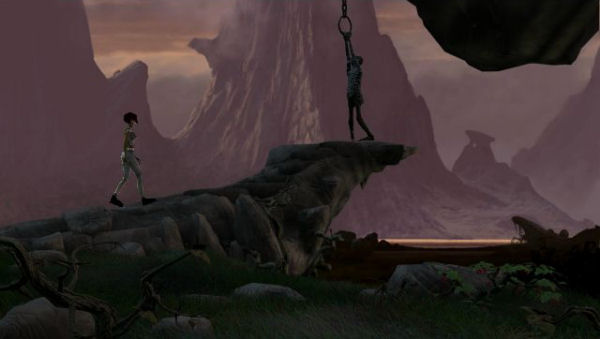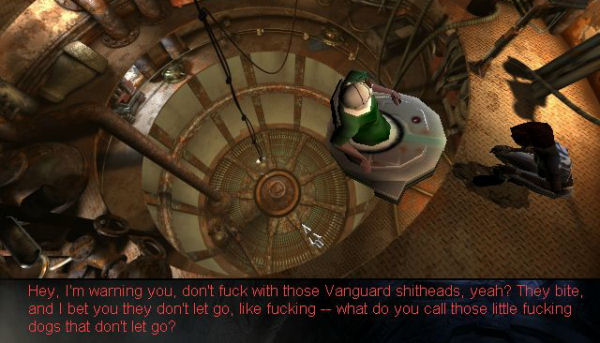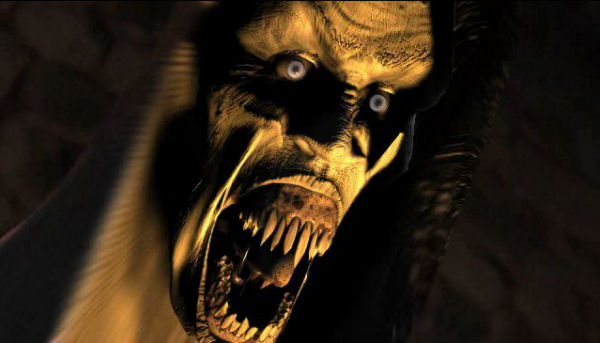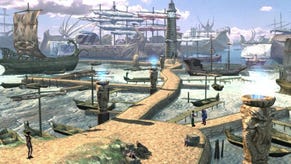The Longest Journey - A Retrospective
A game that almost vanished.
My earlier post about story reminds me of a piece I wrote for PC Gamer a few years back, looking at The Longest Journey, and its lasting effect on me. There was never room for my full thoughts then, and the full length 'director's cut' version has sat on my hard drive since. Clearly Dreamfall has been released since, telling us more about April Ryan, and another retrospective is due for that. Meanwhile, here's the full-length version of the original piece.
“Mystery is important. To know everything, to know the whole truth, is dull. There is no magic in that. Magic is not knowing, magic is wondering about what and how and where.”
The Longest Journey almost vanished away unnoticed, another obscurity ranted about by a few, but never reaching any acclaim. In the mire of pre-millennial adventure gaming, it could so easily have been drowned by the density of its peers, ignored by pessimism, never given the chance it so strongly deserved. How it was joyously liberated from this fate is mysterious. And in mystery, there is magic. In The Longest Journey, there is magic.
As a point and click adventure, The Longest Journey already defied conventions, ignoring the genre’s desperately floundering attempts at “catching up”. Developer and writer Ragnar Tørnquist and his team at Funcom understood that “catching up” was meaningless – they had a story to tell, and a world in which it needed to be told, and so this was the game they made. The natural instinct to say how it recaptured the adventure’s previous glory is strong, but this just simply isn’t true. Adventure gaming had never been as glorious as The Longest Journey – it hadn’t ever even come close.
Eighteen year old art student April Ryan provides the most perfect eyes through which to witness this tale. Sceptical, sarcastic and sassy, she tight-rope walks the same line as Buffy, mouthing off but never quite tumbling into the irritating. And yet still somehow gets away with normally grating late 90s Ameriteenisms such as, “That’s SO not appropriate.” You forgive her, because you realise, as do the games’ twin worlds of Stark and Arcadia, that she’s important.
A friend was recently explaining to me how Silent Hill 4 manages to spook so effectively by blurring the two worlds of the normal, and the horrific. When an element of one leaks into the other, stability in the known is shaken, and fear drip, drip, drips in. In April Ryan’s life, it is the fantastic that begins to disturb the normality of her existence, the world of dreams invading her world of rational and science. And where a good horror story shows you fear in the every day, The Longest Journey shows you magic. Set 200 years in the future, April’s world is enough like our own to allow us to identify, but distant enough to allow it status as a metaphor.
The meta-narrative tells of how, long ago, the united Earth was divided into two: Science and Magic, Stark and Arcadia. The Bladerunner-inspired future version of our known world allows the effects of this severance to have been demonstrated even more, well, starkly than they are now. Wars have increased the degree of global apartheid, Capitalism’s punishments are more prevalent, authority rules over democracy, and people simply get on with being people as it happens around them. It is unavoidably our future.
In contrast, Arcadia refers back to so many fantasy lands, simplicity bolstered by magic, thus creating seismic instability and inevitable fracture. But Arcadia at least possesses hope. Stark’s worldview is blind, eyes gouged out by its people’s own hands. It allows the coming destruction of Chaos without even the consciousness to question. And so it is through April’s dreams, through her powerful imagination, that she is drawn to ‘shift’ out of that world, and to learn her part in the shaping of the future.
I was unaware of how much I’ve been influenced by The Longest Journey, until returning to its tale for this piece. I’ve been writing a children’s story, on and off, for a couple of years, never getting very far with it, but always driven to persist by its unstoppable urge to leave my head. I’m now wondering how much I have to remove because I’ve simply plagiarised it from my subconscious. The ideology of this game is lodged deeply inside me, partly because I so strongly identified with the message I took from it, and partly because that message is so powerfully told. It is always a point and click adventure. There are always daft clicking the rubber duck on the clamp and tying it to the string puzzles. But it works with these elements, not despite them. Nearly every voice is perfectly cast, and the recording supervised by the game’s creator and writer, Ragnar Tørnquist. Yes, there is swearing, but there is swearing where real people swear. And wow, are the conversations long. But they are telling you a story like no other.
April is not a simple character, a template onto which we may impose ourselves to experience a world. She has issues with her father, trouble letting people get too close, and a propensity to run away rather than face difficulty. She is a complex and broken human being, thrown into a situation too big to understand, and arguably destroyed by it. She’s a person.
The opening quote, said to April by her mentor when she is persisting with him for answers, speaks for the whole game. The Longest Journey is epic and magnificent, but completion makes you aware that this is only a tiny fraction of a created world. Indeed, these are only weeks in the whole of April Ryan’s lifetime. So much remains unknown. But to know the whole truth is dull. Magic is in not knowing, magic is wondering about what and how and when.












